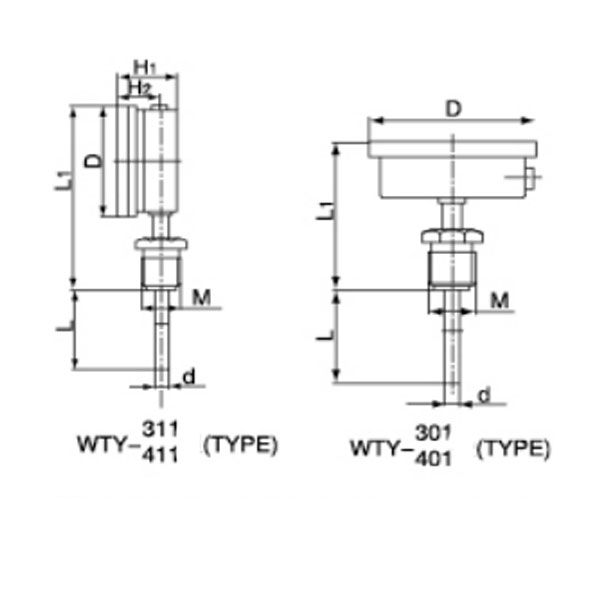
90 DN Axial Type Thermometer
Introduction:
An axial type thermometer is a temperature measuring instrument that utilizes the principle of thermal expansion to determine the temperature of a substance or environment. It consists of a metal or glass stem with a bulb or reservoir at one end, which contains a temperature-sensitive liquid, typically mercury or alcohol. The stem is marked with a temperature scale that allows readings to be taken.
The working principle of an axial type thermometer is based on the expansion and contraction of the temperature-sensitive liquid with changes in temperature. When the temperature increases, the liquid inside the bulb expands and rises up the stem, indicating a higher temperature on the scale. Conversely, when the temperature decreases, the liquid contracts and moves down the stem, indicating a lower temperature.
The design of an axial type thermometer is characterized by the positioning of the bulb and stem. In this type of thermometer, the stem is aligned along the same axis as the bulb. This configuration allows for a direct transfer of temperature between the bulb and the liquid inside the stem, providing accurate readings.
Axial type thermometers are commonly used in various applications where temperature measurement is required. They are especially useful in laboratory settings, industrial processes, and HVAC (heating, ventilation, and air conditioning) systems. Their simplicity, reliability, and wide temperature range make them popular instruments for temperature monitoring.
It is important to note that due to the use of mercury in some axial thermometers, they may pose environmental risks if mishandled or broken. In recent years, efforts have been made to replace mercury-based thermometers with safer alternatives such as alcohol or digital thermometers.
Overall, axial type thermometers provide a straightforward and effective method for temperature measurement, and their design has been widely used for many years, although newer technologies such as digital thermometers have gained popularity in certain applications.
Technical Parameters:

Thermometer drawing:






















